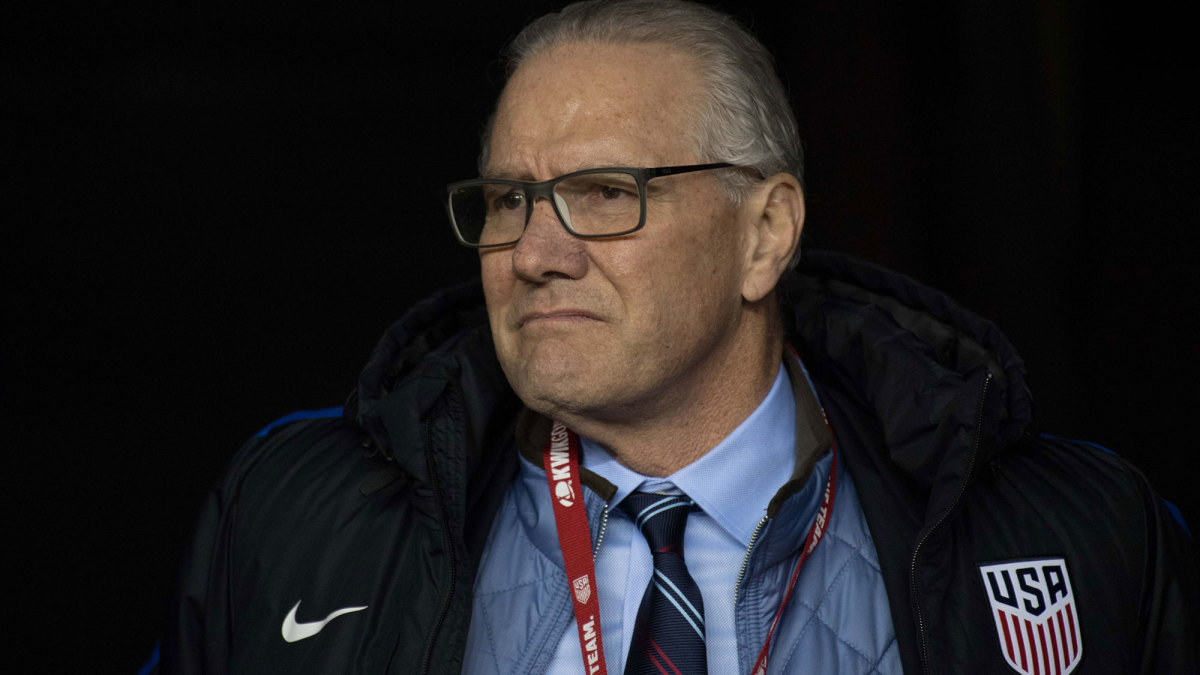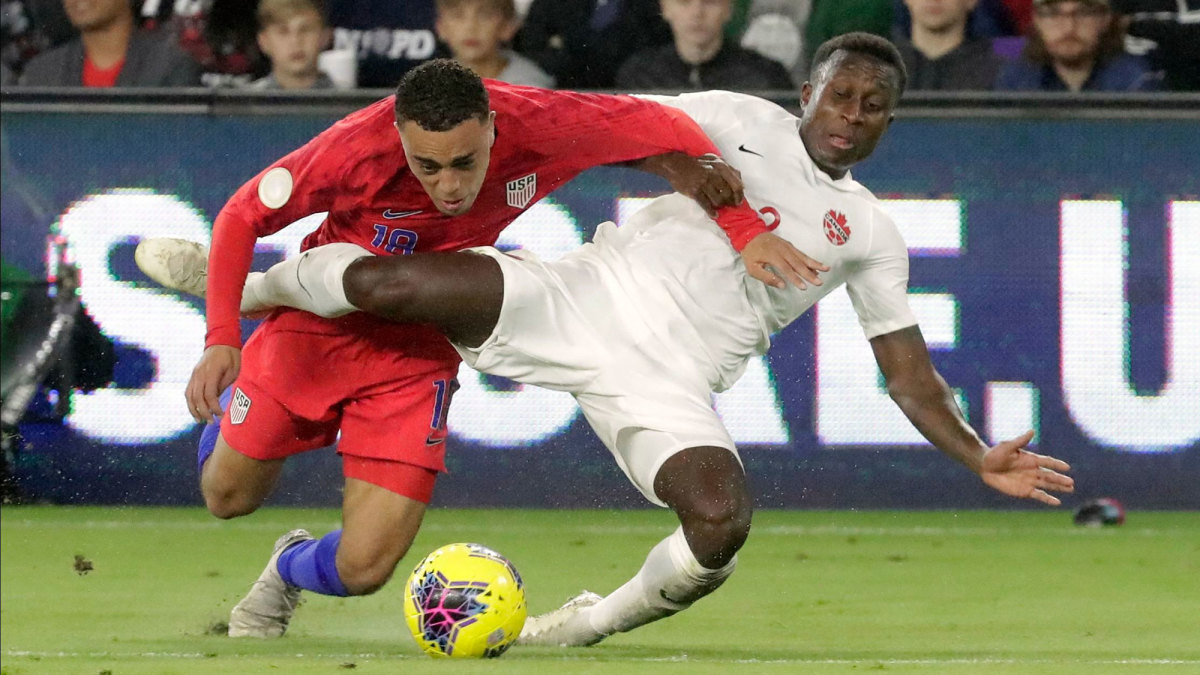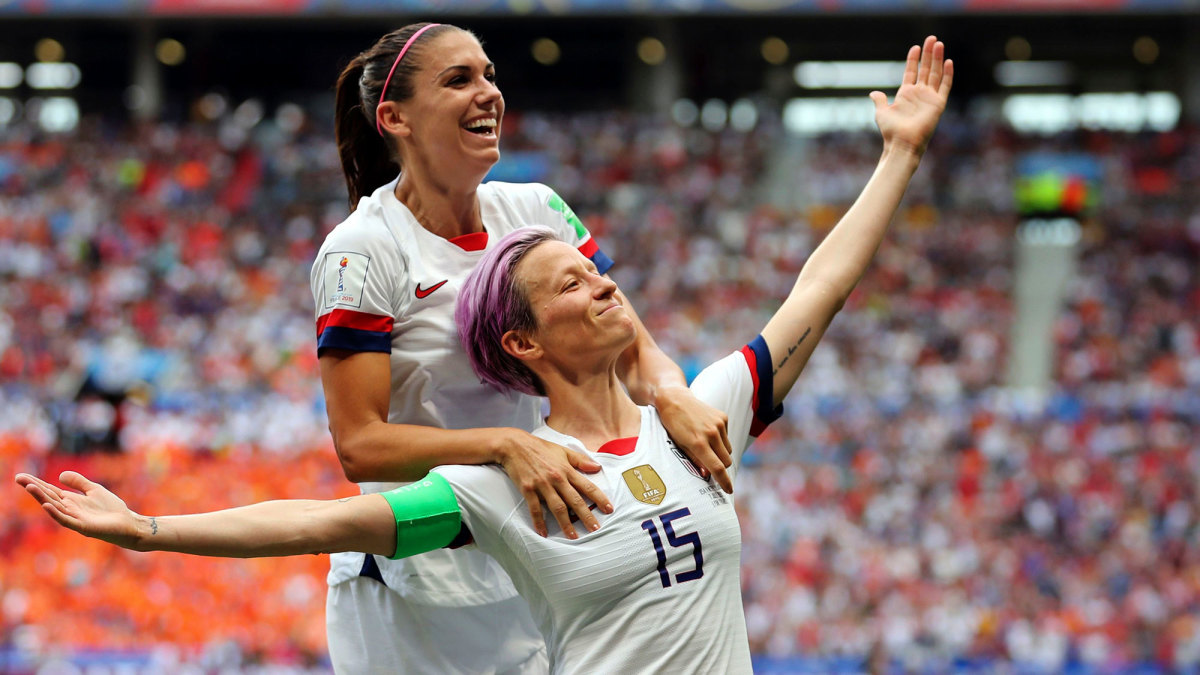U.S. Soccer's Top 10 Stories of 2019

Another year is in the books, another star is atop the women's national team's crest and another important year is on the horizon for U.S. Soccer.
2019 was a tumultuous year for the federation, one with successes on the field, conflict off of it and self-reflection at Soccer House making for an all-encompassing 12 months. Before turning the page to 2020, let's look back at the year that was for U.S. Soccer by counting down its 10 biggest stories of 2019. For the purposes of this list, these items are related to U.S. Soccer and its national teams only, and not the club game in the USA.
10. Another quarterfinal exit for the U-20s
The U.S. U-20 national team brought arguably the most talented side it has ever had to the U-20 World Cup in Poland yet bowed out in the quarterfinals for the third straight time. On the plus side, three straight quarterfinals is an impressive feat, but the quarterfinal matchup vs. Ecuador feels like a winnable one that got away.
The run included a landmark win over France and breakout performances from the likes of Sebastian Soto, Alex Mendez, Richie Ledezma and Chris Richards. The future remains bright for a number of U-20 stars already seeing action or getting involved with their respective European clubs, and 2020 should feature a handful getting time with both the U-23 Olympic qualifying team and the senior national team.
9. Lawsuits, lawsuits and more lawsuits
The legal fees are mounting and are expected to reportedly total in the $9 million range in the 2020 fiscal year, according to U.S. Soccer documentation. U.S. Soccer is fighting on so many fronts, it should be clamoring for a winter break like overworked Premier League teams.
There are lawsuits filed by the U.S. Soccer Foundation and Relevent Sports, a longstanding one from the NASL and the ongoing parallel battles vs. the U.S. women's national team and Hope Solo in regards to gender equity. Those cases are taking up precious time and resources, and all sides are simultaneously try to win in the court of public opinion. Getting focus out of the courtroom and back on the field should be a chief objective for the coming year.

8. Structure changes, and a big one at the top
U.S. Soccer welcomed a new women's national team general manager in Kate Markgraf and gave Earnie Stewart further oversight after a brief run as men's national team GM, making him the federation's sporting director. That all happened right before the CEO role was vacated by Dan Flynn, who stepped down from his post in September.
The CEO role is as significant as it gets, and all eyes are on the identity of Flynn's successor, whether it's an outsider, an insider or an insider with an unavoidable conflict of interest (Jay Berhalter, the current chief commercial officer of U.S. Soccer and a leading candidate for the job, is the brother of men's national team coach Gregg Berhalter). There's also the matter of the 2020 vice presidential election, which takes place in February. They're two of the top developments to watch in the coming year, given the top-down influence at the federation.
7. Goodbye, Jill; Welcome, Vlatko
Jill Ellis stepped away as U.S. women's national team manager after a second straight Women's World Cup title, leaving her critics with little ammunition. She exited as the all-time winningest coach in program history. In her place steps Vlatko Andonovski, who oversaw two friendly wins in November and a talent ID camp this month and braces for Olympic qualifying next month.
The expectations are high and the returns immediate for Andonovski, who will be tasked with getting the U.S. women back to the top of the medal podium at the Olympics in Japan after a rough quarterfinal exit in Brazil in 2016. An underrated task for Andonovski is how he manages the player pool and the veterans on the wrong side of their primes, with only 18 players making the Olympic squad.
6. Sergiño signs on
The U.S. men's national team's biggest win of 2019 arguably came in the recruiting game, as it landed 19-year-old Dutch-American fullback Sergiño Dest's international allegiance. Dest has come through the U.S. youth system and performed at U-17 and U-20 World Cups, whereas the Netherlands latched onto him only when he seized more playing time at Ajax, and that initial loyalty appears to have been rewarded. In Dest, the U.S. has a fullback pillar to build around for years to come, which is not something to take lightly considering the recent state of the player pool.

5. Chaos after Canada and Berhalter's up-and-down first year
The U.S. men's national team ultimately won its Concacaf Nations League group and will play in the semifinals in 2020, but the road was not the smoothest. A loss in Canada–the first to the neighbors up north in 34 years–opened up all kinds of angst among supporters and critics. Was some of that bigger-picture, pent-up anger at U.S. Soccer that needed a target? Probably. But Year 1 of the Berhalter era included some extreme ups and downs, not to mention attendance figures that continue to underwhelm.
The initial positivity and praise of his tactical detail was quickly turned into skepticism and criticism, especially after home losses to Jamaica and Venezuela before the Gold Cup and a pair of defeats to Mexico in the Gold Cup final and the first friendly after it. It didn't help Berhalter's cause that players like Jozy Altidore, Tyler Adams, Christian Pulisic and Weston McKennie all missed time with injuries, but such is life as an international manager. Berhalter and Stewart claim the process is on the right track regardless of results, but there's a real need for adjustment and for some of the younger prospects to earn their way into becoming starting lineup mainstays in order for any dynamic improvement to take place in 2020.
4. When Glassdoor reviews get real
"Never read the comments" is a familiar refrain, but in the case of anonymous Glassdoor reviews from U.S. Soccer employees, the comments were must-read material. The reviews, verified and amplified by the New York Times, lifted the lid on the culture inside Soccer House and forced U.S. Soccer to take a good, hard look at itself. Some in-house changes have already been put in motion, and president Carlos Cordeiro is saying all the right things, but time will tell how influential those calls for help–and their impact on the CEO choice–truly wind up being.
3. Pulisic nets record transfer, wins POY again
Only two days into 2019 came a U.S. Soccer bombshell: Christian Pulisic secured a $73 million move to Premier League side Chelsea from Borussia Dortmund. It blew away the previous transfer record for an American player and ended the guessing game of where the Pennsylvania native would go.
Pulisic returned to Dortmund on loan for the remainder of the season before joining Chelsea in the summer, and he's endured some ups and downs. He notched an assist in the UEFA Super Cup vs. Liverpool and was a starter early in his tenure under Frank Lampard, but he was then banished to the bench as questions about his readiness for the Premier League stage piled up. He answered them with a rich run of form and wound up winning U.S. Soccer's male player of the year honors for a second time at the age of 21. Chelsea's transfer ban has been lifted, and Pulisic was already in competition with select teammates for playing time, but he's shown he's capable of holding his own and carving out a place under the bright lights at Stamford Bridge.
2. USWNT adds a fourth star
It's easy to take the U.S. women's national team's dominance for granted, but if you think about what it was able to accomplish–given all the noise off the field and the constant target on its back on it–it's truly remarkable it repeated as Women's World Cup champion. And that's the tea.
Nations around the world are improving at an increasingly rapid pace, evidenced by the field in France this past summer, yet the champions are still standing. They went through a knockout-stage gauntlet after a cakewalk of a group phase, beating Spain, host France, England and the Netherlands to lift the trophy again. Those four are arguably among the top five European nations, yet proved no match for a team led by veterans such as Megan Rapinoe, Alex Morgan, Becky Sauerbrunn, Julie Ertz and Carli Lloyd and breakout talents like Rose Lavelle and Abby Dahlkemper. No women's national team has ever followed a Women's World Cup triumph with Olympic gold the next summer, and that will be the next objective for this distinguished bunch.

1. Megan Rapinoe wins just about everything
It's not often that a 34-year-old athlete can reach new heights in his or her career, but that's precisely what Rapinoe did.
You can quibble with how much she actually succeeded on the field compared to teammates and international counterparts. Yes, three of her six goals in France were penalty kicks (do pressure-packed PKs on a World Cup stage–especially in the second half of a scoreless final–not matter?), and yes, she hardly played for her club. But what she accomplished transcended how you would typically assess an athlete's performance. She remains a polarizing figure, but shined despite plenty of hate coming her way and a Twitter feud with the White House–all while being a leading voice on the USWNT's very public and pioneering fight for equal pay.
In terms of hardware, there's the World Cup Golden Boot and Golden Ball, Ballon d'Or and FIFA Best awards and numerous Person of the Year honors from various media publications (including this one). There's the media tour de force she put on amid the USWNT's post-Cup celebrations, in which she tackled sporting, political and human rights issues articulately and with grace and called on other high-profile individuals to use their platforms to inspire and enact change. Ironically, she fell short of Ertz for U.S. Soccer's own female player of the year honors, but Ertz, too, carried immense value before, during and after the World Cup and was also a presence for her club.
When taking everything into consideration for U.S. Soccer, it was the year of the USWNT, and within that, it was the year of Megan Rapinoe.
